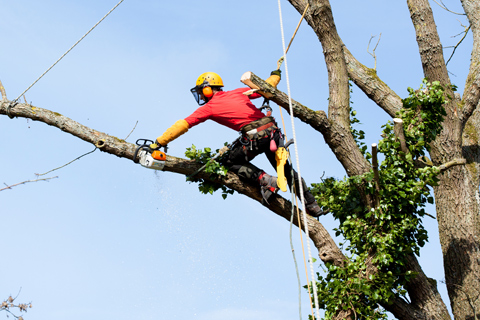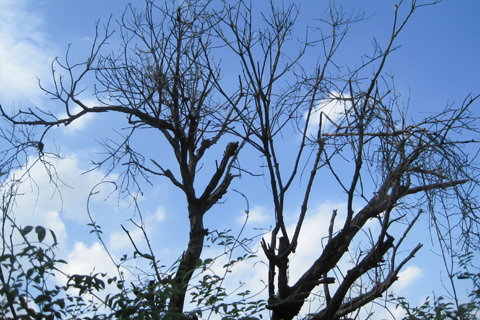Notice: Undefined variable: page in /home/vrxdg1855sn3/public_html/wp-content/themes/72tree/content.php on line 15
Notice: Trying to get property 'ID' of non-object in /home/vrxdg1855sn3/public_html/wp-content/themes/72tree/content.php on line 15
Tree Pruning Techniques

Your trees are constantly responding to environmental changes and throughout the year, they will need some help by way of pruning.
Tree pruning will help to improve the overall health of your trees, their overall appearance, and naturally reduces the possibility of tree failure. The improper pruning of a tree can stress a tree leading to potential decay, infestation, disease, and even death.
Below the arborist at 72 Tree, Seed & Land Co. discuss the different ways trees can be properly pruned.
Tree Height Reduction
When reducing the height of a tree, much care and precision pruning are necessary.
This procedure must be done correctly; “topping” or cutting through the main trunk often leads to several issues for the tree including failure.
Depending on the species and growth pattern of the tree, height reduction may not be possible without irreparably damaging the tree. In these cases, the choice to remove or relocate it may have to be made.
Tree Crown Raising
Crown raising involves the pruning, cutting, or removal of the lowest branches of a tree. This procedure provides more clearance under a tree for people and vehicles.
This procedure, when performed on younger trees, will encourage more growth in the upper branches. When raising the crown on older more developed trees, much caution is needed as the lower branches will be much larger and leave larger wounds.
Tree Crown Thinning
Crown thinning is a wise option for trees that sustain the full force of strong winds or have to bear the weight of accumulated snow or ice.
This is accomplished by the selective and careful removal of branches from within the crown. This process reduces the force of the wind on the canopy, as well as reducing the weight of snow and ice on the tree.
Care must be taken when thinning a crown. The improper procedure or over thinning can lead to disease, decay, infestation, or make the tree more susceptible to being blown over.
Tree Crown Cleaning
As the name suggests, crown cleaning is the removal of dead and dying branches. Crown cleaning is the more common of the pruning options.
This procedure helps to protect your tree by removing unnecessary weight, reduces the risk and hazard of falling branches, helps to halt the progression of decay and disease, thus improving the overall health of the tree.
Small or Ornamental Tree Pruning
Small or ornamental trees should be routinely pruned for many of the same reasons mentioned above. They may also be pruned for simple esthetics or to train them as they grow.
Professional Regular Pruning
Once aware of the signs your tree needs pruning, having your trees regularly pruned by a tree service or certified arborist will keep your trees healthy and beautiful. This will also benefit your landscape by the early detection of problematic infestations, fungi, or irregularities that may otherwise go unnoticed until it’s too late to correct.
An added benefit to regular pruning services is curb appeal. The better your landscape appears, the more curb appeal your property will have. This usually translates to a higher property value.
Overall, pruning is beneficial and necessary throughout the year. Follow these tree pruning tips, and visit our tree care blog more articles and information.
Notice: Undefined variable: page in /home/vrxdg1855sn3/public_html/wp-content/themes/72tree/content.php on line 15
Notice: Trying to get property 'ID' of non-object in /home/vrxdg1855sn3/public_html/wp-content/themes/72tree/content.php on line 15
My Tree is Dying from the Top Down

What causes a tree to die from the top down? A common reason for a tree to die from the top down or from its outer limbs is drought. Even with reasonable rainfall, your tree may not be getting the water it needs to thrive and survive.
When a tree begins to deteriorate from the top down, this condition is also known as dieback. Dieback is the gradual death of tree branches, foliage, and/or limbs starting at the tips (extremities) and moving inward toward the trunk. Dieback, as mentioned above may result from drought. However, there may be a variety a variety of causes contributing to the gradual death of your tree.
The following will help you to identify what is causing dieback, the options available to save the tree, and the actions you can take to prevent the tree’s death.
What Can Cause Dieback from the Top Down?
In order to identify the cause of dieback, you need to know what you are looking for. The following are common reasons and symptoms when tree health declines.
Drought – Symptoms include the wilting or discoloration of leaves, limb, twig, and branch dieback, as well as the death of roots. Trees suffering from drought are very likely to be affected by insects, disease, or both.
Soil Imbalance – Soil is composed of minerals, organic and inorganic matter, water, air, and has an acidic or alkaline pH level. When an imbalance of these levels occurs, nutrients needed for the tree’s survival may not be absorbed. This can certainly lead to dieback and death of the tree if not addressed.
A sure sign of soil trouble is the absence of worms, plant growth, and small insects. “Life” should be detected in your soil, if not your soil’s health needs attention.
Insect Infestation – Invasive insect species also cause or accelerate dieback. When trees are stressed, they produce more amounts of nitrogen, potassium and phosphorus. This in turn makes them more attractive to invasive insects that feed off them.
As an infestation grows, the tree becomes more stressed and in turn, produces more of the chemicals – attracting more insects. This process can become a self-reinforced loop, and the initial stressors now combined with the infestation will eventually lead to the death of the tree if not treated promptly.
NOTE: While trees have adapted their defenses and healing processes over the millennia, it is these same adaptations that may feed an insect infestation.
What Options Do I Have to Save My Tree?
For each of the causes listed above, there is a specific course of action to halt or even reverse it. Once the cause is identified, the following simple treatments may help to save your tree.
Drought Treatment – During dry seasons or when rainfall is scarce, give your trees a thorough watering once a week. Make sure that the soil is soaked to a depth of at least twelve inches. Mulching around your trees base will slow the evaporation process and help the soil and tree retain moisture.
Soil Imbalance Treatment – While calling in a Certified Arborist may be the best option here, you are perfectly capable of getting a soil test kit from your local nursery or home improvement store (gardening department). Use the kit to determine if there is an imbalance for the species of affected tree(s), then seek appropriate soil treatments to return the soil to a healthy composition.
Insect Infestation Treatment – Once an infestation is confirmed, insecticides, traps, and oil can be used to kill the existing insects and prevent further infestation. Read this 72tree.com/using-dormant-horticultural-oil-treat-tree-insect-infestations/ for more on using and applying oils to treat insect infestations.
It is important to note that insect infestations are typically the result of a tree already stressed or in bad health. Once the infestation has been dealt with, begin looking for other stressors that may have lead to the weakening of the tree’s health.
How Do You Save a Dying Tree?
When dieback occurs, saving your tree will involve pruning or trimming off the dead parts of the tree, and identifying the reason that the dieback occurred. Once identified, treat it. If it is an infestation that is threatening other trees and plants, you may have to make the decision to completely remove the tree to prevent further contamination and damage.
Proper Treatment and Prevention – Once you have treated the cause of your tree’s dieback, understand that you can save a dying tree by simply paying attention to it through the seasons. Your tree will show signs of stress, and once you detect it, consider it a call to action.
It is equally important to establish and follow seasonal maintenance and care. Bringing in a Certified Arborist or reputable tree service to inspect your trees and landscape will help give you the upper hand in keeping your trees healthy!
